There are many different breeds of rabbits, all with different colors, sizes, shapes, and coat types. While the subtler differences between rabbit breeds are mostly of interest to those who are plan to show their bunnies, the average pet owner should focus on the size and type of coat. Breeds can vary in size from the smaller dwarf breeds weighing less than 2.5 pounds to some of the giant breeds, weighing in at a whopping 20 pounds or more. Coats range in color, from whites to browns, grays, and black, while fur varies in texture and ranges from short to long.
When deciding which rabbit breed is best for your household, keep in mind both the projected adult size as well as proper maintenance. For example, the longer-coated breeds require daily grooming, so they are a little more time-consuming than the shorter-hair breeds. Here is an alphabetical list of rabbit breeds, including the average size and coat type, so that you can make an informed decision if you would like to welcome a rabbit into your family.
Pet Rabbit Breeds: An Alphabetical List
- 01 of 43
Alaskan
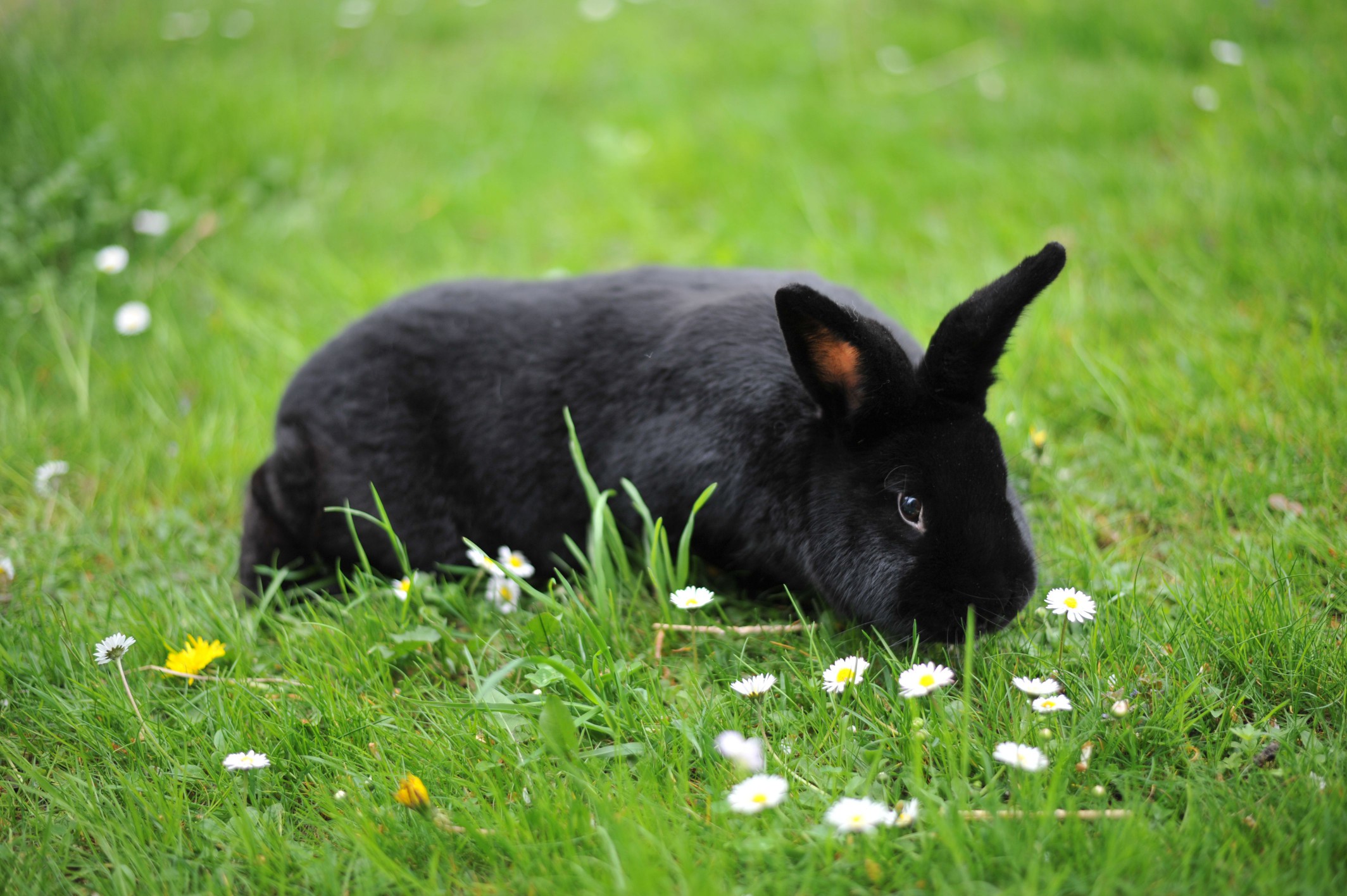
Credit: Ailura / Wikimedia Commons / CC By 3.0
Based on its name, you might think the Alaska rabbit originated in the state of Alaska, but the jet-black breed is in fact native to Germany, where it was created primarily as a fur rabbit (non-pet), although the attractive-looking Alaska rabbit can make a fine pet. Though it was at one time recognized by the American Rabbit Breeders Association, the breed is no longer recognized by ARBA. The Alaska is recognized by the British Rabbit Council in the United Kingdom.
- 6 to 8.5 pounds
- Black
- Thick coat
- Originated in Germany
02 of 43American
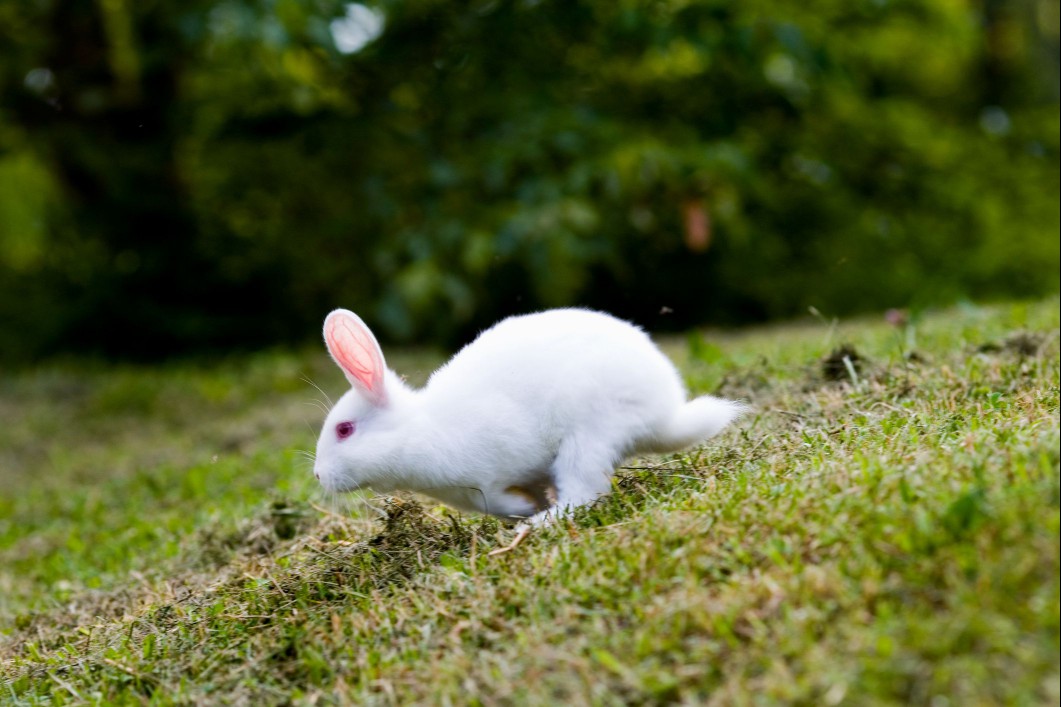
Credit: Jorja M. Vornheder / Getty Images
The American rabbit is a very rare breed. This large rabbit weighs about 12 pounds and comes in two solid colors (blue and white). The American is known for its sweet temperament and beautiful fur. The American Livestock Breed Conservancy lists the American as a critical breed.
- 9 to 12 pounds
- Blue, white
- Medium build, narrow head
03 of 43American Chinchilla
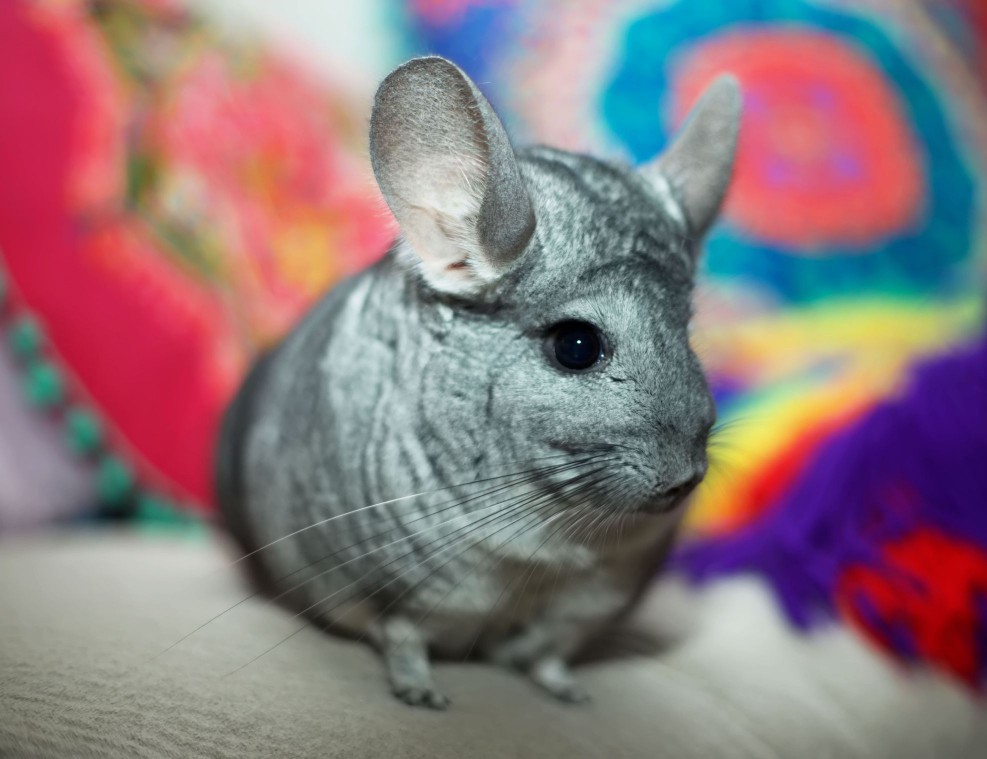
Credit: Melanie Dawn Harter / Getty Images
The history of the American Chinchilla dates back to the New York State Fair in 1919, where a British exhibitor sold two Chinchilla rabbits to two U.S. rabbit breeders, who went on to breed them up in size. Gentle and hardy, the American Chinchilla is the rarest of the Chinchilla rabbit breeds.
- 9 to 12 pounds
- Chinchilla colored
- Dense, fine hair that is smooth and glossy (1.25 inch-long coat)
- Relatively round body
04 of 43American Sable
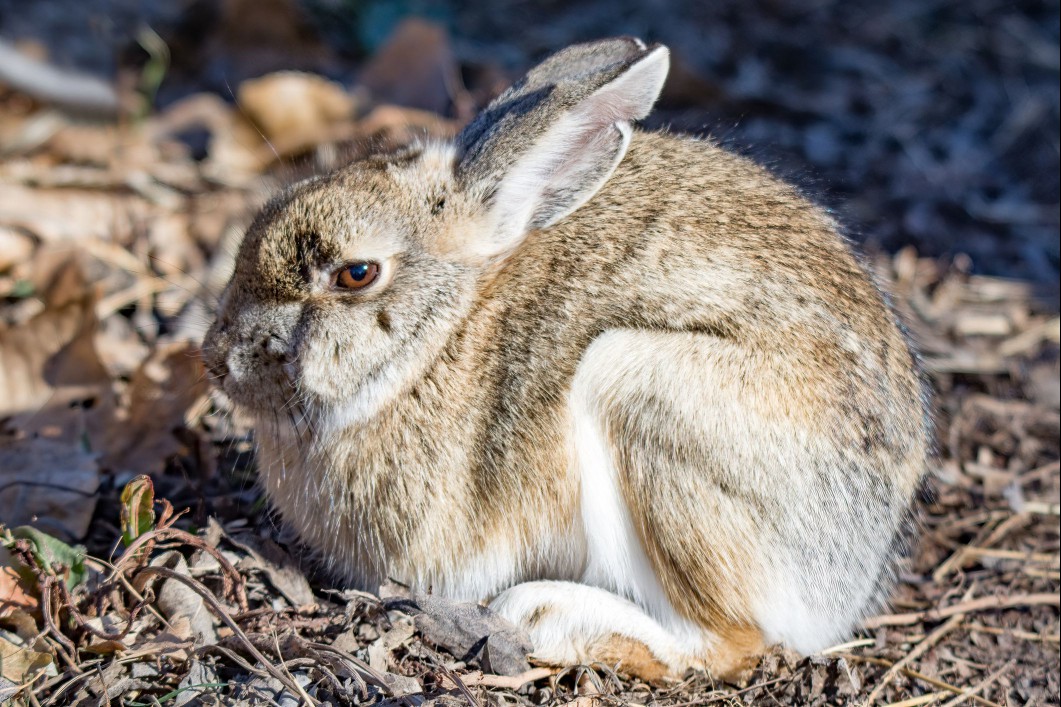
Credit: John Morrison / Getty Images
The medium-sized American Sable rabbit has a uniquely colored brown coat that resembles the color of a mink and features various shades from light to dark, with dark sepia color on the face, ears, feet, and tail. Rare today, the American Sable breed was created in the 1920s using different types of chinchilla rabbits.
- 7 to 10 pounds
- Sepia brown
- Medium build with soft, dense, fine coat with coarse guard hairs
Continue to 5 of 43 below05 of 43Angora
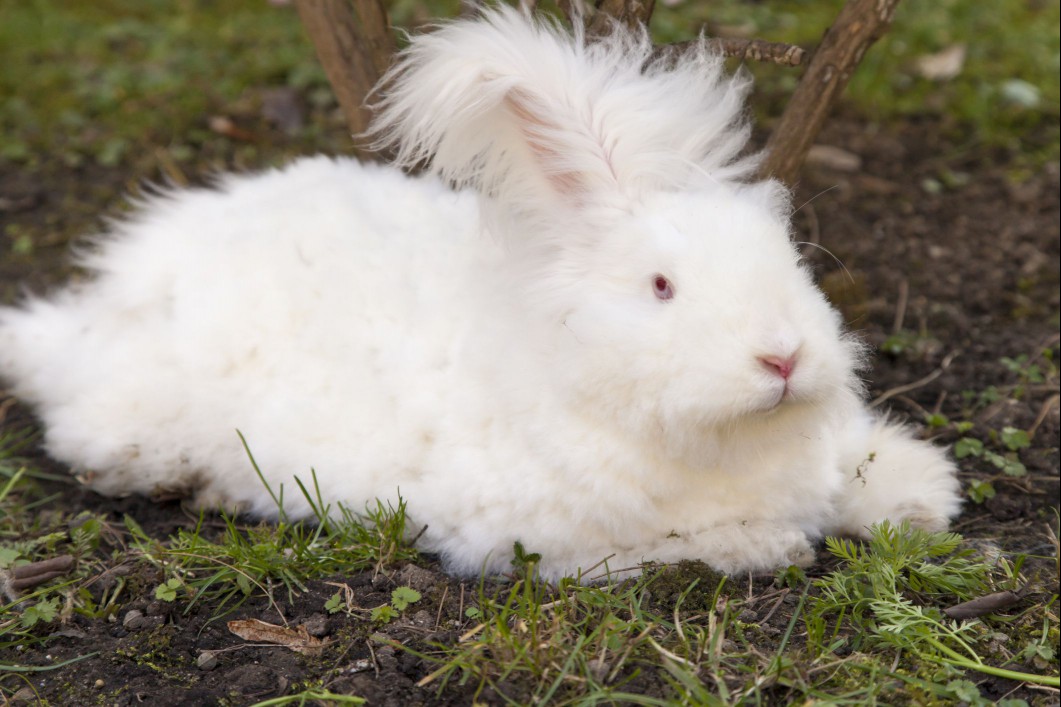
Credit: PeterTG / Getty Images
Angora rabbits are known for their profuse, silky wool coats, known as Angora wool. The luxurious coat requires considerable care, including frequent brushing to prevent or remove mats, as well as plucking, shearing, or clipping the coat every few months. There are several Angora rabbit breeds, including the English Angora, French Angora, Giant Angora, and Satin Angora.
- Variety of sizes and colors
- High maintenance
- English angora: 5 to 7 pounds, long silky hair
- French angora: 7.5 to 10.5 pounds
- Giant Angora: 8.5+ pounds, soft fine undercoat (wool), straight stiff guard hairs, and a wavy fluff with a guard tip in between
- Satin Angora: 6.5 to 9.5 pounds, very fine wool
06 of 43Argente Rabbits
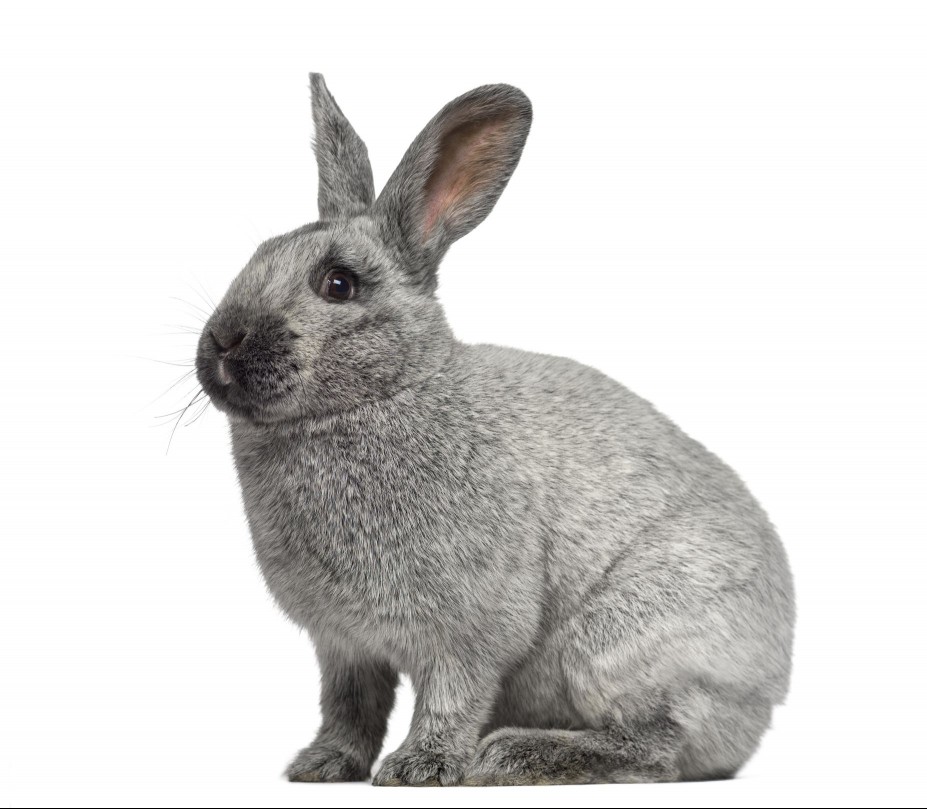
Credit: GlobalP / Getty Images
Argente rabbits hail from France and are known for their dense, glossy silky coats that come in a variety of beautiful colors. There are several Argente rabbit breeds, which range in size, including Argente Brun (silver-brown), Argente Bleu (silver-blue), Champagne d’Argent (silver rabbit of Champagne), Argente Noir (born black, but transform to a silvery slate-blue color), Crème d’Argent (creamy-white color with a bright orange undercolor) and Argente St. Hubert (silver).
- 5 to 12 pounds
- Various shades, including black, blue, slate, silver, brown, or creamy white
07 of 43Belgian Hare
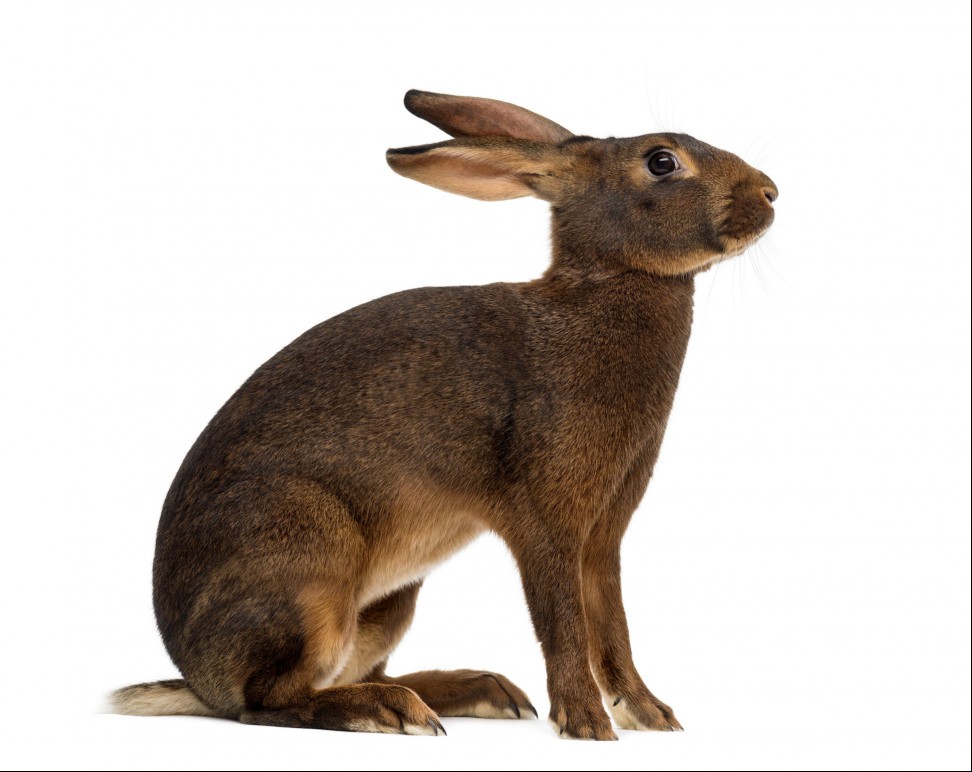
Credit: Life On White / Getty Images
According to the American Rabbit Breeders Association, the Belgian Hare is one of the oldest rabbit breeds in the United States, dating back to the 1880s in America, though the breed was developed much earlier in Belgium. With its long, slender body, arched back, and rounded hindquarters, the Belgian Hare looks much like a wild hare. The breed is extremely rare.
- 6 to 9.5 pounds
- Reddish tan or chestnut with slate blue under-coloring; slender build, fairly stiff coat
- Slender build
08 of 43Blanc de Hotot (White Hotot)
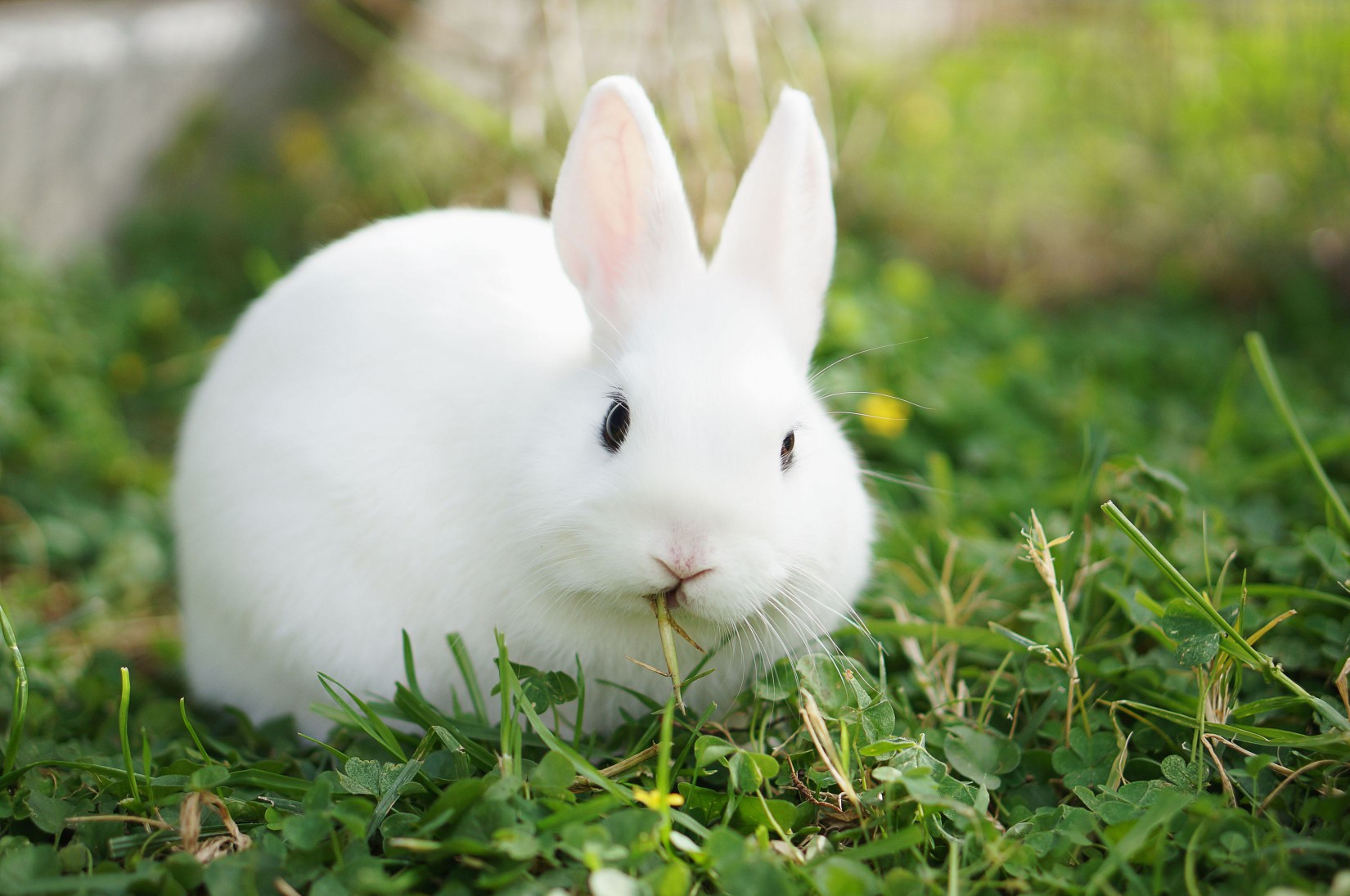
Credit: Diana Elizabeth Photography, LLC / www.dianaelizabeth.com / Getty Images The Blanc de Hotot (White Hotot) is a solid white rabbit with black “eyeliner” markings ringing its dark eyes. The Blanc de Hotot was developed in France in the early 19th century. The Blanc de Hotot rabbit was used to develop the Dwarf Hotot, which has similar markings but is much smaller.
- 8 to 11 pounds
- White with black eye ring
- Well rounded body
Continue to 9 of 43 below09 of 43Britannia Petite

Credit: Naruden / Getty Images
Weighing in at a maximum of 2.5 pounds, the Britannia Petite is a very tiny rabbit, and in fact, is one of the smallest rabbit breeds recognized by the American Rabbit Breeders Association. In the United Kingdom, the Britannia Petite is known as the Polish. Energetic and high-strung, the Britannia Petite can be difficult to handle.
- Less than 2.5 pounds
- Ruby-eyed white, black otter, black, chestnut agouti
- Slender, fine-boned build with a sleek, silky coat
- One of the smallest breeds of rabbits
10 of 43Californian
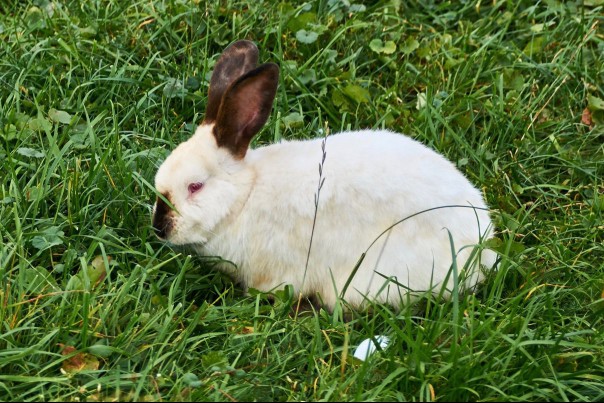
Credit: Maksim Shchur / Getty Images
The Californian rabbit is one of the most popular breeds recognized by the American Rabbit Breeders Association. As its name suggests, the breed was created in Southern California in the 1920s. The Californian rabbit has a white body with Himalayan coloring (darker points of color on the extremities, including the nose, ears, feet, and tail. They always have pink eyes.
- 8 to 12 pounds
- White, with black nose, ears, feet, tail
- Rounded body, medium build, and a short smooth coat
11 of 43Checkered Giant
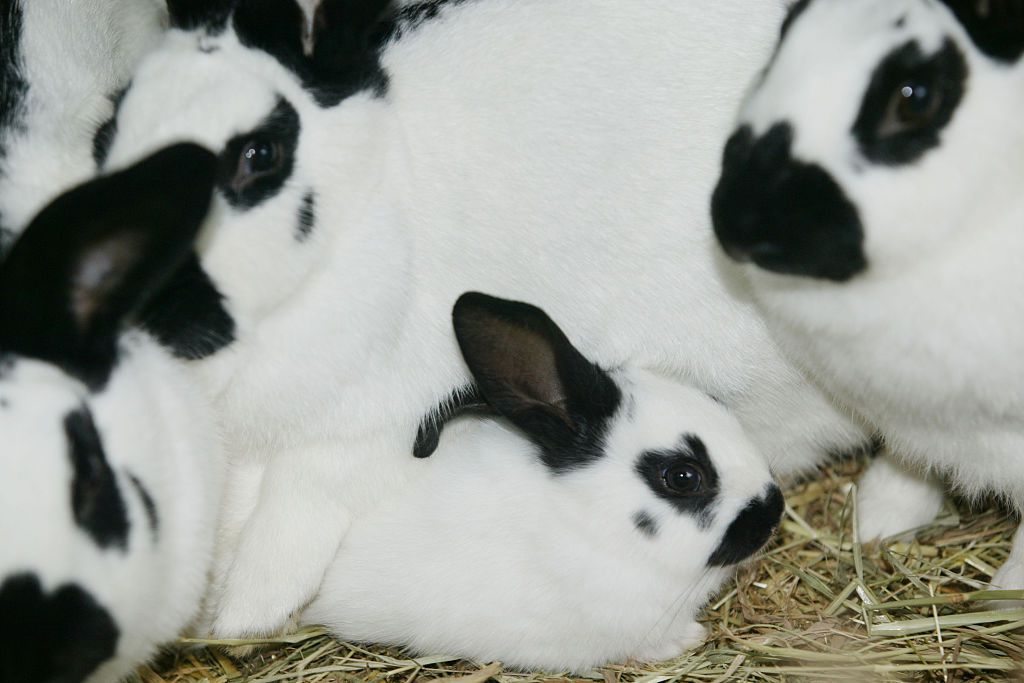
Credit: Francis Apesteguy / Contributor / Getty Images
A rabbit breed with a long history in the United States, the Checkered Giant was first recognized by the American Rabbit Breeders Association in 1919. True to its name, the Checkered Giant is a large rabbit that weighs at least 11 pounds or more and has distinctive checkered markings on its white body. The breed is known as “the Rabbit Beautiful.” The Checkered Giant is an active rabbit that needs a lot of space to run.
- More than 11 pounds
- White with black or blue markings (along spine, body spots, cheek spots, colored ears, eye circles, and butterfly mark on nose)
- Long, hare-like body
12 of 43Chinchilla
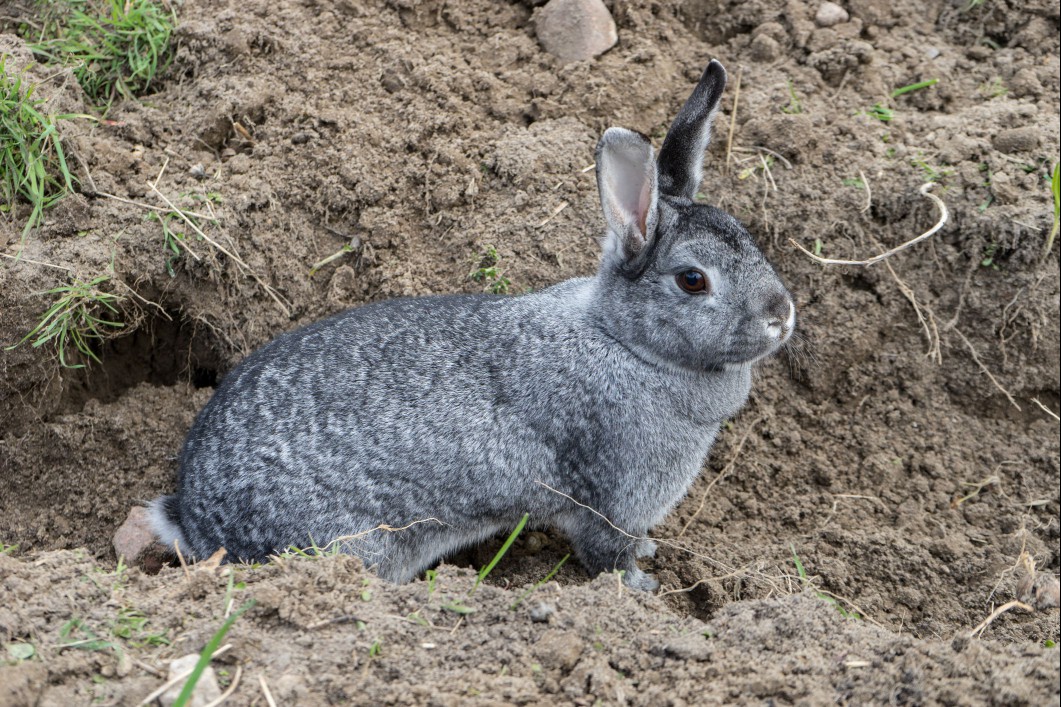
Credit: coramueller / Getty Images
The American Rabbit Breeders Association recognizes three Chinchilla breeds: the American Chinchilla, the Standard Chinchilla, and the Giant Chinchilla. All Chinchilla rabbit breeds have soft coats with unique silver coloring that resembles the chinchilla, a small rodent native to South America that is also kept as a pet. The color is a blend of grays, with dark slate blue at the base, darker blue at the top edge, and shades of light gray in between.
- 5.5 to 6.5 pounds
- Chinchilla grey colored
- Fine boned
- Black at birth with white hairs start showing at about 2 months
Continue to 13 of 43 below13 of 43Cinnamon
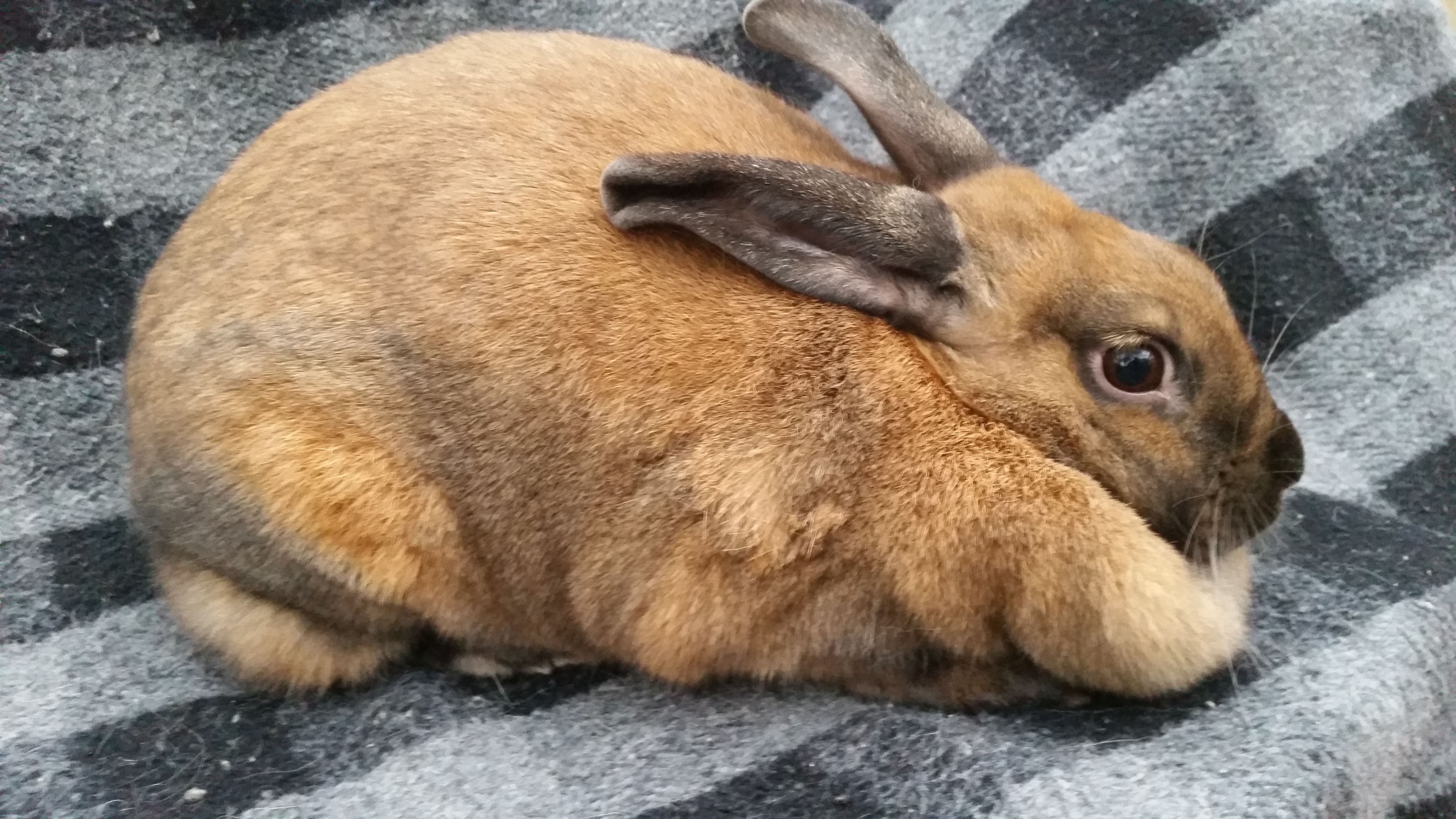
Credit: Eric Wright / FOAP / Getty Images The Cinnamon rabbit is so named due to its lustrous short red coat. The breed was created in the 1970s from a cross between a Chinchilla doe and the New Zealand buck. One of the bucks from the litter was then bred with a Checkered Giant/Californian doe, resulting in some red babies. Cinnamon rabbits are medium-sized and make sweet and affectionate pets.
- 8.5 to 11 pounds
- Rust or cinnamon color with grey ticking on back and grey on the belly. Rust-colored spots inside hind legs as well as butterfly mark on nose and eye rings
14 of 43Continental
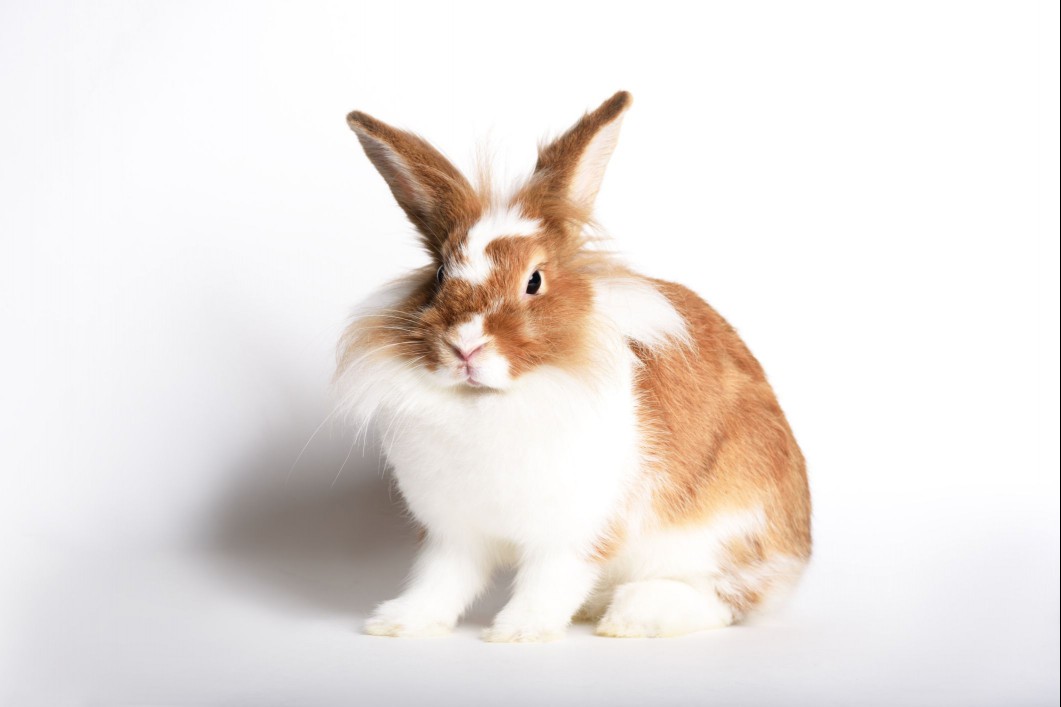
Credit: Svetlana Lavereva / Getty Images
Sometimes referred to as Contis or Continental Giants, the Continental rabbit is likely related to the Flemish Giant. They come in white and colored varieties, and are a large breed, weighing up to 16 pounds. The Continental rabbit is recognized by the British Rabbit Council, but it is not recognized by the American Rabbit Breeders Association.
- 12.4 pounds and up
- White, black, grey, chestnut, and varying shades
- Live only 5 to 7 years
15 of 43Creme d'Argent
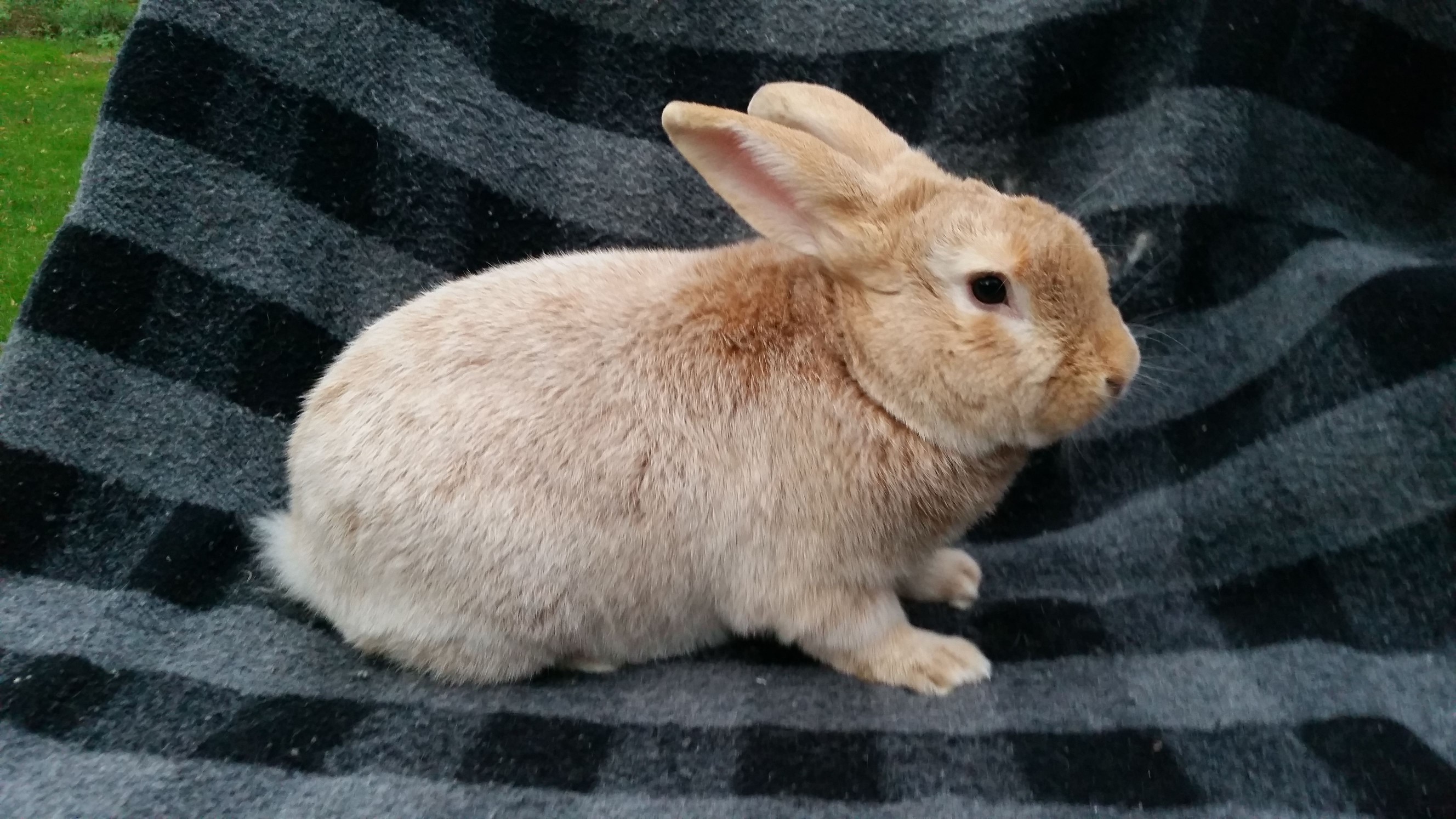
Credit: Eric Wright / FOAP / Getty Images Argente rabbits hail from France and are known for their dense, glossy silky coats that come in a variety of beautiful colors. One of four Argente rabbit breeds recognized by the American Rabbit Breeders Association, the Crème d’Argent is known for its creamy-white coat with a bright orange undercolor. This rare breed only exists in the United States and the United Kingdom.
- 8 to 11 pounds
- Creamy white with orange undercoat
- Butterfly marking on nose
16 of 43Dutch
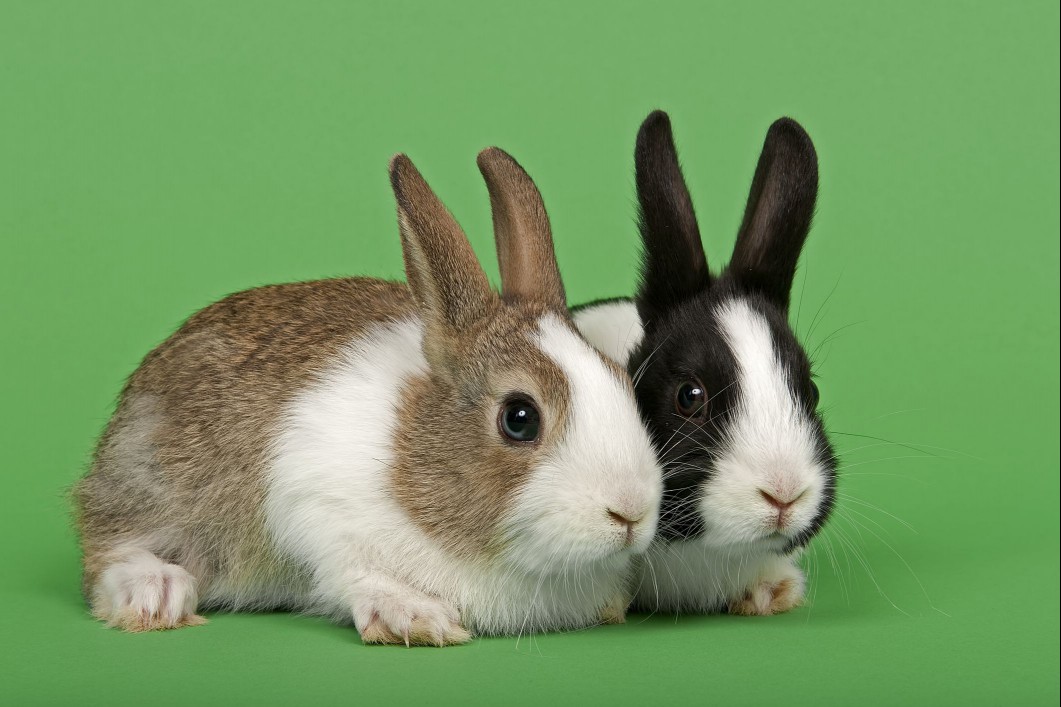
Credit: Erich Schmidt / Getty Images
With its characteristic bi-colored markings, the Dutch rabbit is one of the most familiar rabbits, ranking in the top 10 of the most popular rabbit breeds. The breed is small, ranging from 3.5 to 5.5 pounds. Despite its name, the Dutch rabbit in fact originated in England, and it’s one of the oldest breeds of rabbit, dating back to the 1850s. The Dutch rabbit is friendly and active, making it a popular pet.
- 3.5 to 5.5 pounds
- White with black, blue, or brown; chocolate; steel; tortoise
- The front of the face, body, and the back feet are white; the rest is colored
Continue to 17 of 43 below17 of 43Dward Hotot
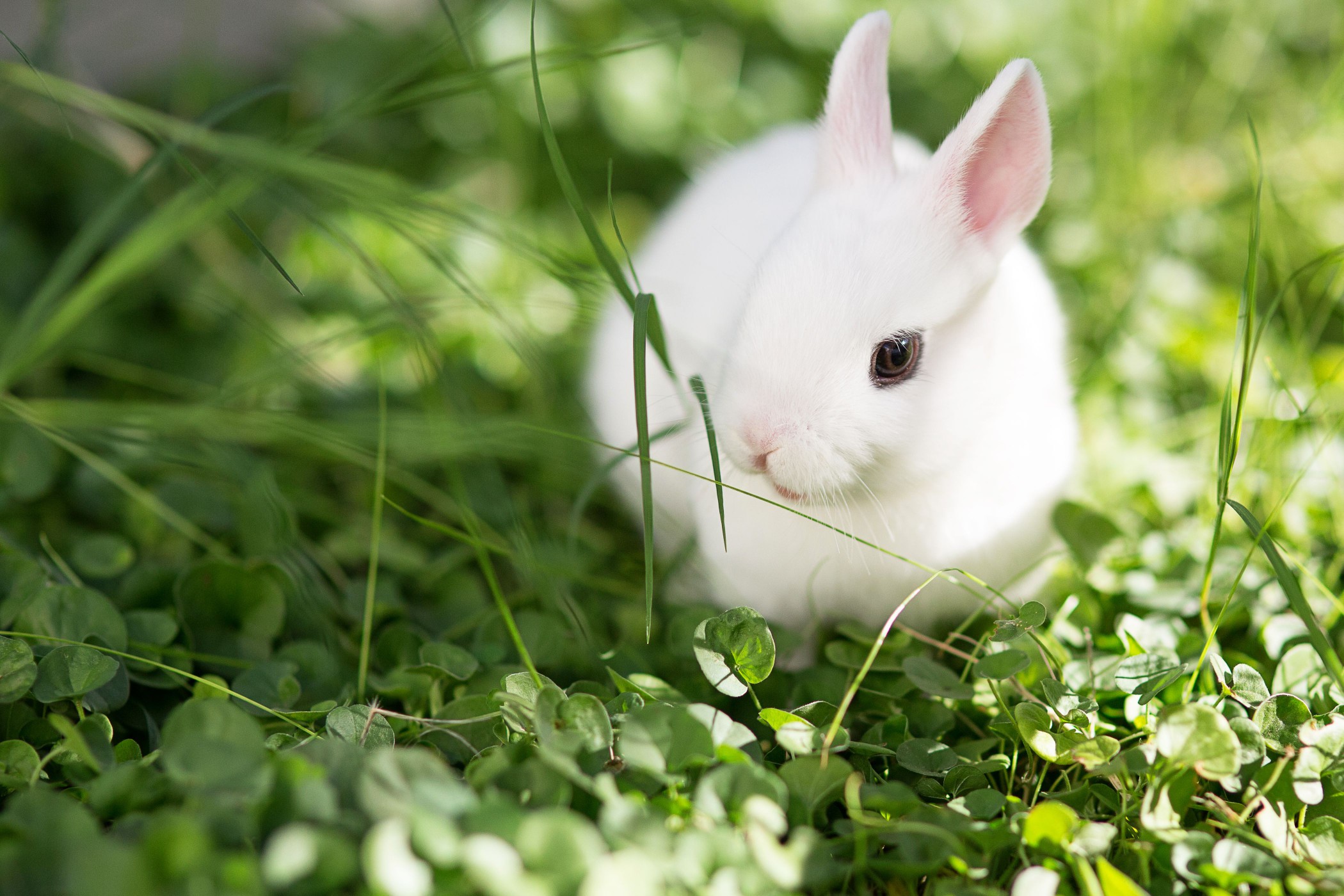
Credit: Diana Elizabeth Photography, LLC / www.dianaelizabeth.com / Getty Images The Dwarf Hotot rabbit is a unique-looking breed, all white with black “eyeliner” markings ringing its dark eyes. It’s related to the larger Blanc de Hotot (White Hotot), from which the Dwarf Hotot acquired its good looks. The Dwarf Hotot is very small, weighing in at less than 3 pounds. Friendly, curious, and active, the Dwarf Hotot is best as an only pet.
- Less than 3 pounds
- White with black eye rings
- Rounded body
18 of 43English Lop
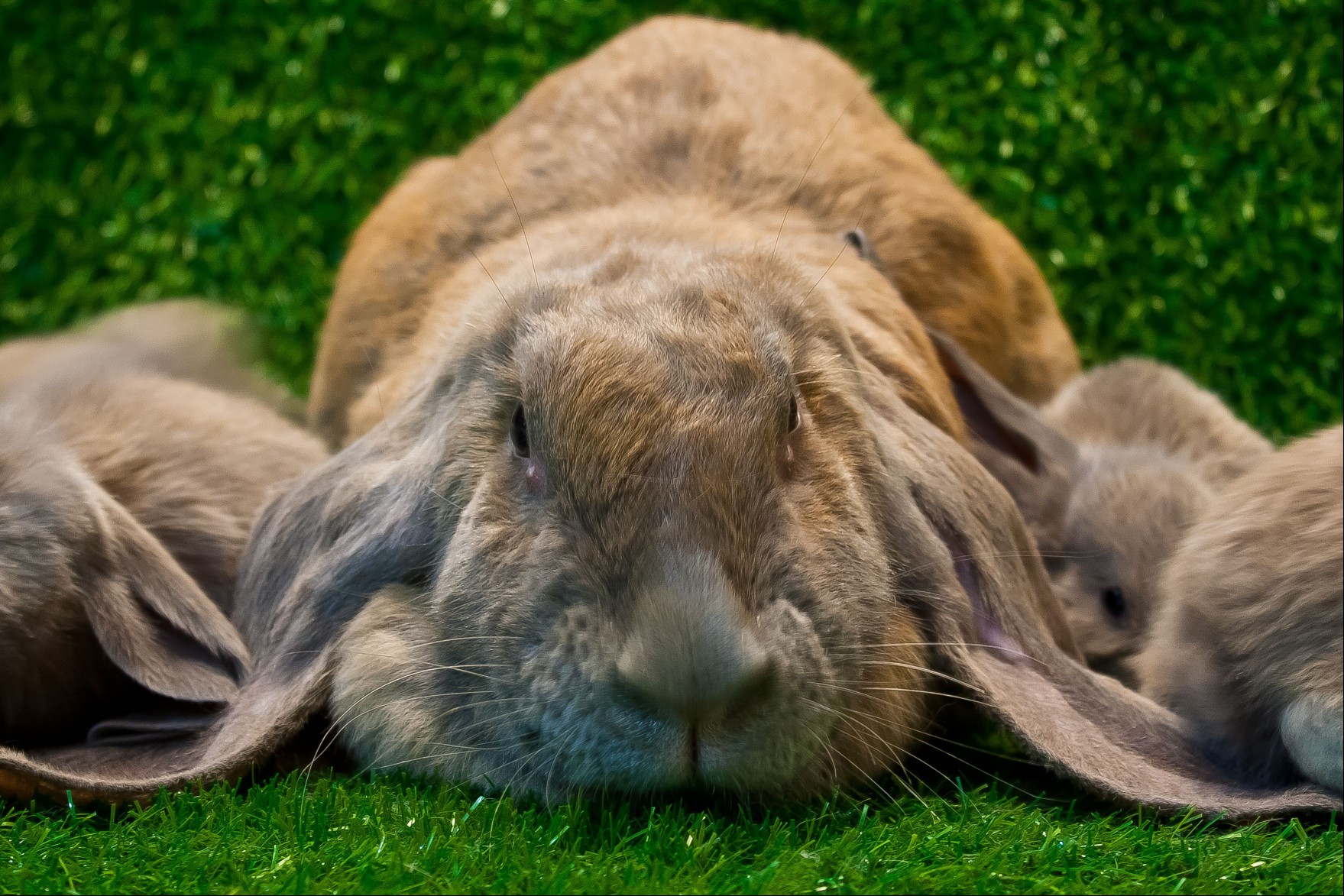
Credit: Naruden / Getty Images
Famous for its extremely long ears (the longest of all rabbits), the English Lop is likely the first lop-eared rabbit breed, meaning all other lop-eared rabbit breeds can trace their ancestry back to the English Lop. English Lops have been known since the early 1800s and were extremely popular pets during the reign of Queen Victoria. Absolutely adorable, the English Lop is a calm and friendly pet.
- More than 9 pounds
- Agouti, broken, shaded, ticked, or wide-band color groups
- Very long lop ears
19 of 43English Spot
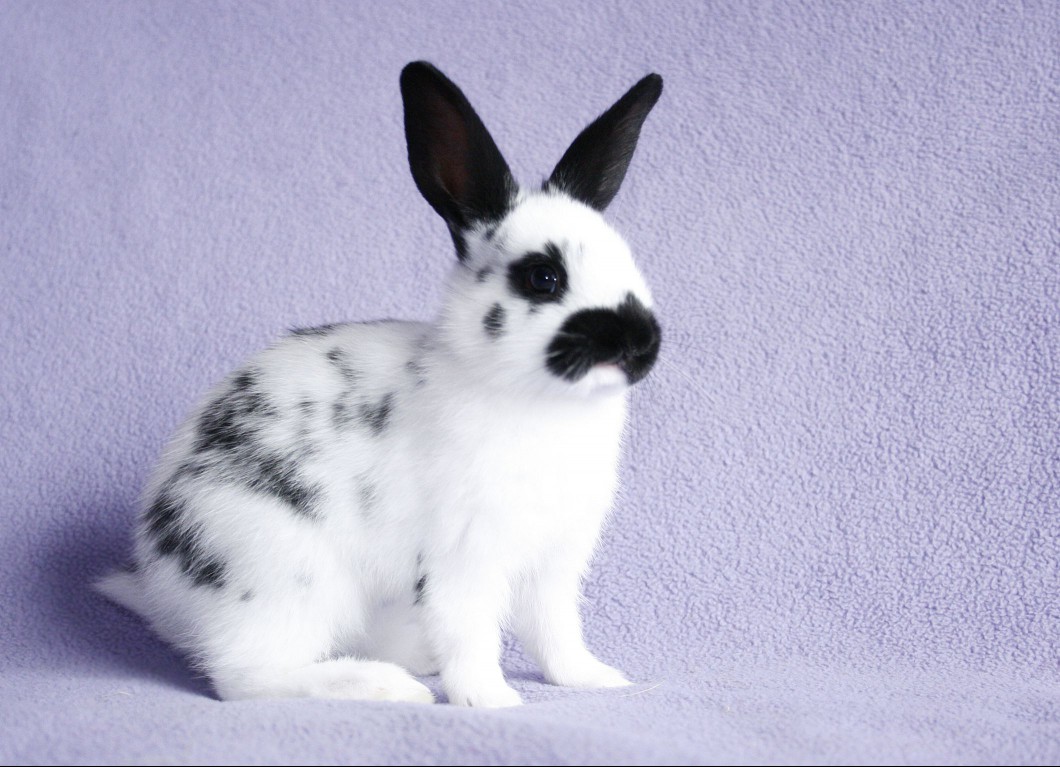
Credit: AlynJ / Getty Images
The attractively speckled English Spot traces its history back to England in the 1800s. The breed arrived in the United States just before the turn of the 20th century, where they were warmly received. The English Spot has characteristic markings on its white body, including a butterfly mark on the nose, eye circles, cheek spots, spine markings (herringbones), colored ears, and a chain of spots along the body.
- 5 to 8 pounds
- White with black, blue, chocolate, gold, grey, lilac, or tortoise
- Long arched body like a hare
20 of 43Flemish Giant (Patagonian)
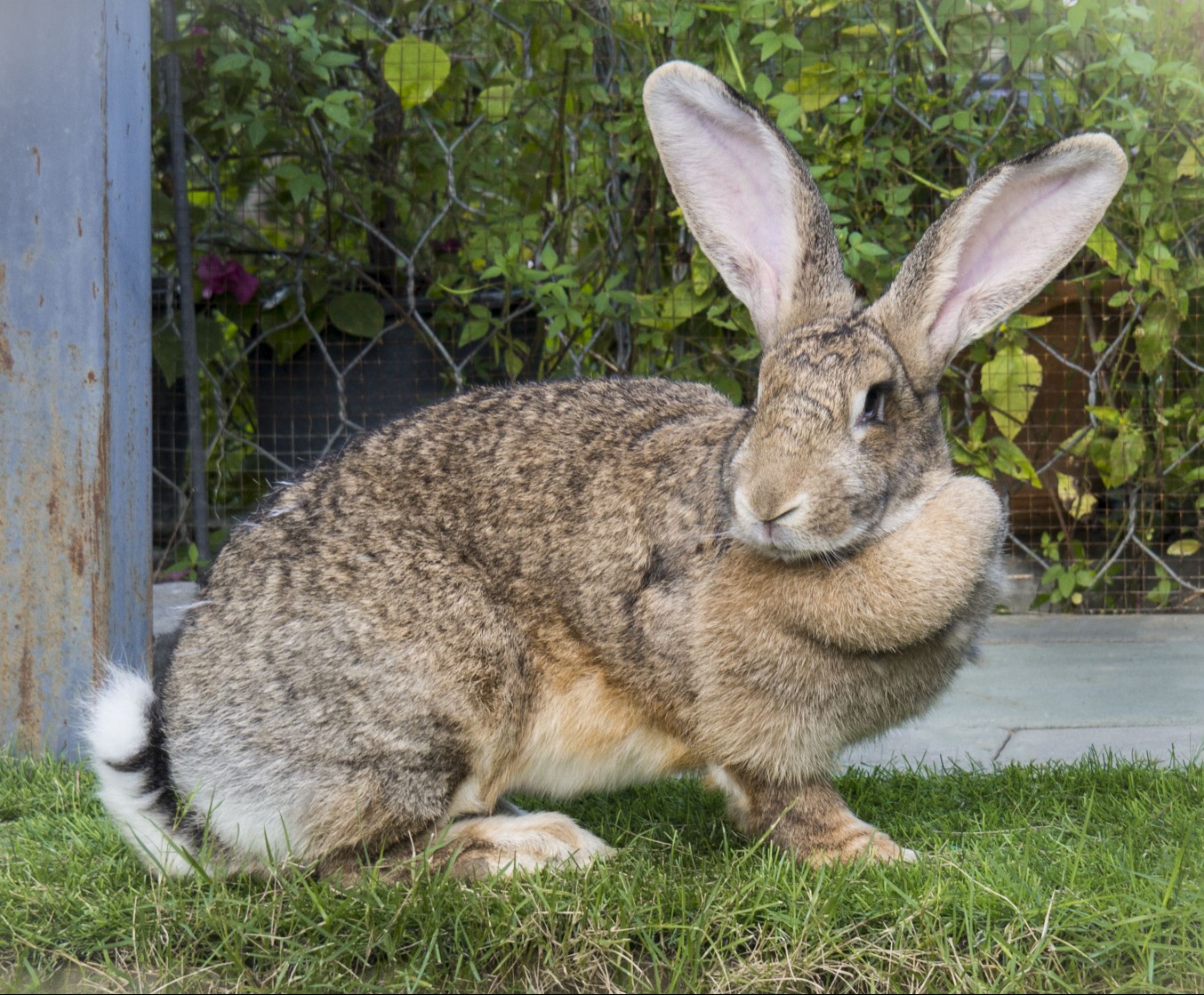
Credit: krithnarong / Getty Images
Named for its believed place of origin of Flanders, Belgium, the Flemish Giant rabbit has been known in Europe since the 17th century. The breed has no maximum weight, but some Flemish Giants can weigh 20 pounds or more. It was brought to the United States in the 1890s, where its large size proved helpful in increasing the weight of rabbits bred for meat. Nicknamed “the Gentle Giant” due to its extremely sweet temperament, the Flemish Giant is an exceptional pet.
- Usually 10 to 20 pounds
- Black, blue, fawn, light grey, sandy, steel grey, white
- Long with a heavy build (but shouldn't be fat)
- One of the largest breeds of rabbits
Continue to 21 of 43 below21 of 43Florida White
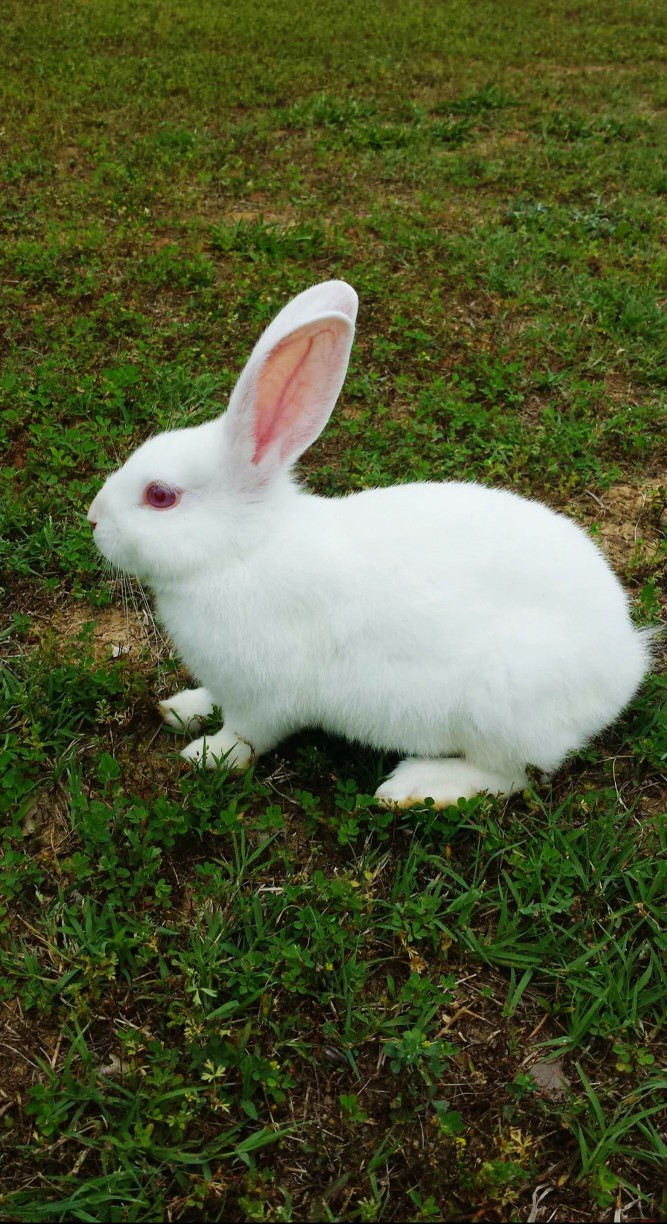
Credit: Shannon Merrell / EyeEm
Although the Florida White rabbit was initially bred in the 1960s for use as a laboratory rabbit, today this smaller rabbit breed is a popular pet and competitive show rabbit. As its name suggests, the Florida White is always pure white with red eyes. The breed has a maximum weight of 6 pounds.
- 4 to 6 pounds
- Pure white
- Rounded body
22 of 43French Lop

Credit: thomaslenne / Getty Images
The French Lop is most likely descended from the English Lop and the Giant Papillon rabbit, which was a large spotted rabbit that’s generally considered to be extinct today. The French Lop is a massive, heavy-boned rabbit that has no upper weight limit. Like the English Lop, the French Lop has low-set droopy ears, although they are not as long as the English Lop’s ears. The French Lop is gentle and laid-back, with a sweet personality.
- 10 pounds and over
- Agouti, broken, self, shaded, ticked, or wide-band groups
- Muscular, heavy build
23 of 43Giant Papillon
The Giant Papillon rabbit was a large, spotted rabbit breed that is now considered extinct. However, some people consider the Giant Papillon to be virtually identical to another breed, the German Giant Spotted, so the technicality of its state of extinction is sometimes debated. The Giant Papillon was also related to and extremely similar to the Checked Giant rabbit.
- 13 to 14 pounds
- White with markings; similar to English Spot, except for patches on sides instead of spots
- Possibly extinct
24 of 43Harlequin
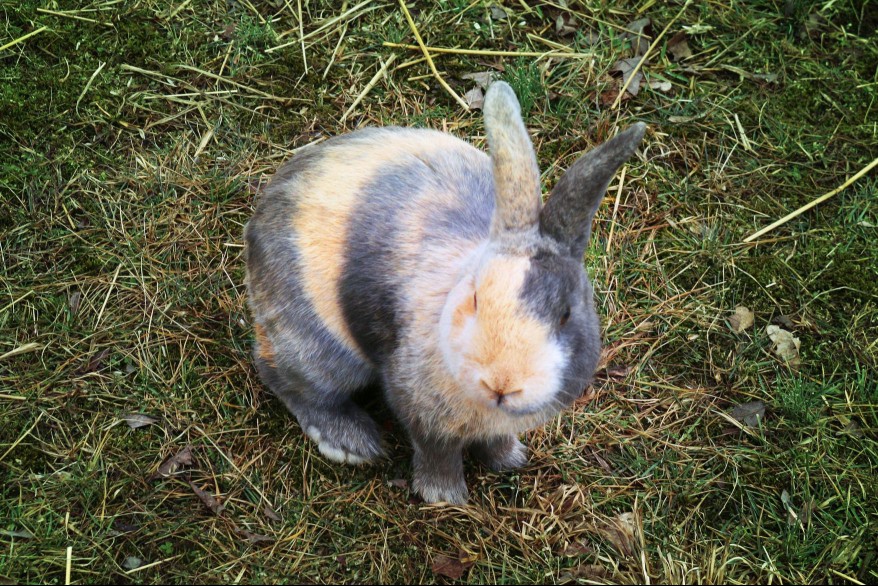
Credit: LadyElizabeth / Getty Images
The Harlequin rabbit is a French breed that’s been around since the 1880s. Harlequin rabbits are bi-colored (two different colors) in different color combinations. Japanese Harlequins may be orange or fawn combined with black, blue, chocolate, or lilac. Magpie Harlequins are white combined with black, blue, chocolate, or lilac. The pattern is unique, with alternating patches of color. For instance, an ideally patterned Harlequins will have half the face white while the other half of the face is black, then the pattern is flipped so the ear on the white side of the face is black while the ear on the black side of the face is white.
- 6.5 to 9.5 pounds
- Black, blue, chocolate, lilac combined with white, orange, or fawn
Continue to 25 of 43 below25 of 43Havana
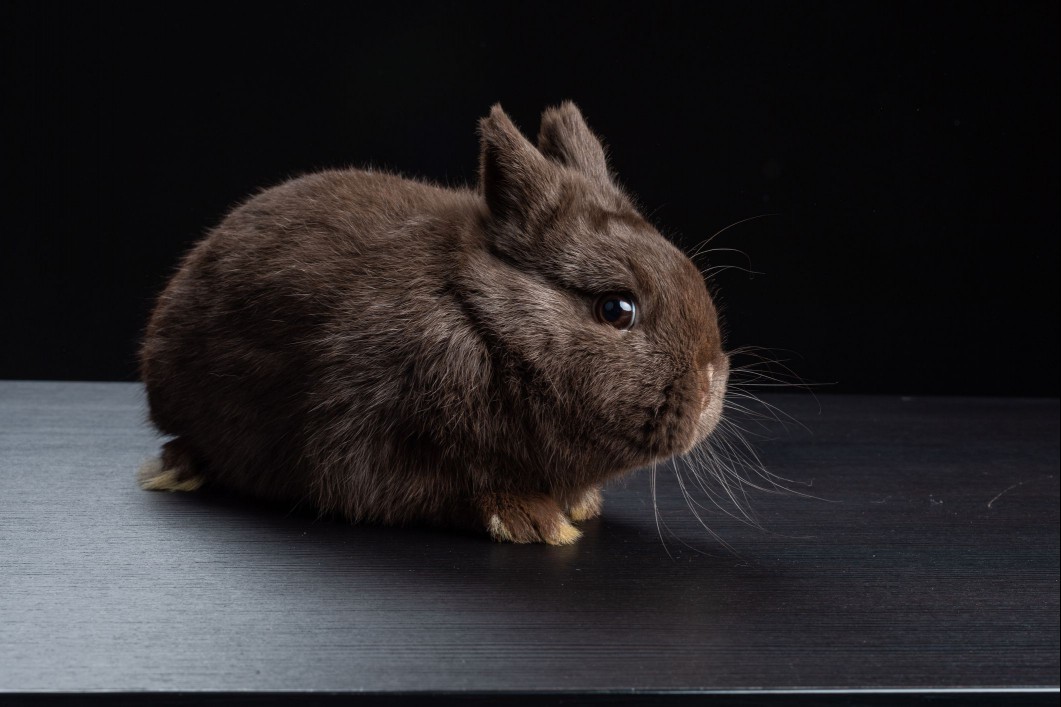
Credit: Lorenzo Passini / Getty Images
The Havana rabbit is known as the “Mink of the Rabbit Fancy” due to its soft, luxurious, mink-like coat. This small rabbit has a compact body shape. Despite its name, the breed originated in Holland. The name Havana referred to the similarity between the color of Havana cigars and the rabbit’s fur (at first, all Havana rabbits were chocolate-colored). Havanas were brought to the United States in the early 1900s; they were recognized by the American Rabbit Breeders Association in 1916.
- 4.5 to 6.5 pounds
- Chocolate, black, blue, broken, and lilac
- Compact, rounded body
26 of 43Himalayan
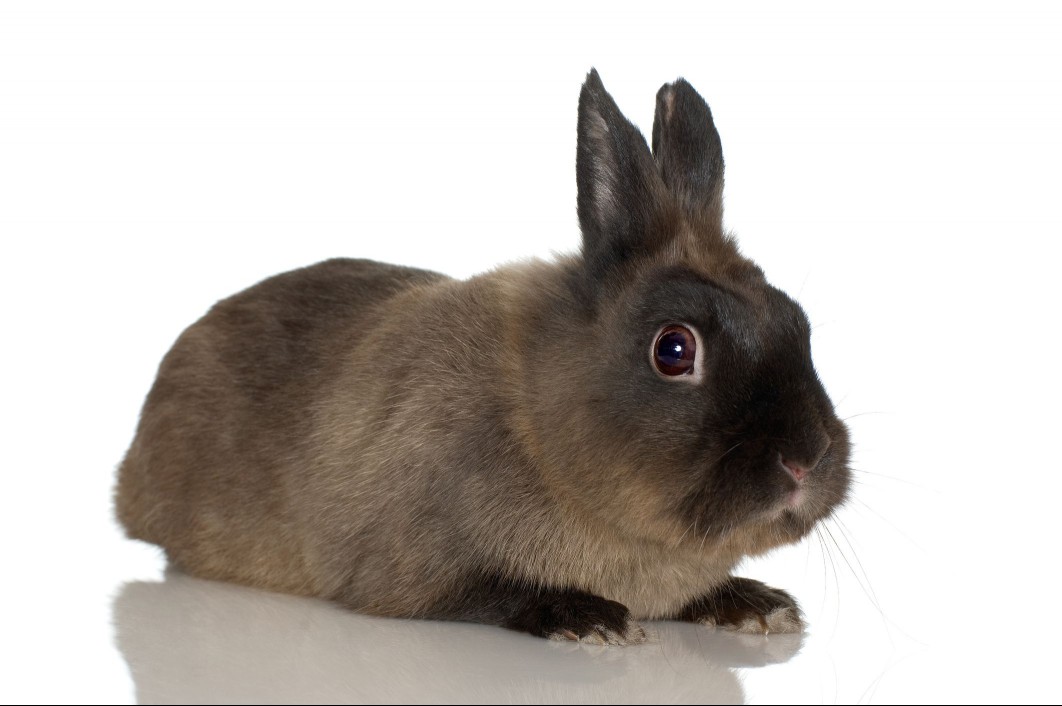
Credit: Jupiterimages / Getty Images
The Himalayan rabbit is a striking rabbit with pointed coloration like a Siamese or Himalayan cat, consisting of a solid white body with darker “points” of color on the extremities (the nose, ears, feet, lower legs, and tail. Points may be black, blue, chocolate, or lilac. Affectionately called “Himmies,” the Himalayan rabbit is also known for its unique, cylindrical body shape. The Himalayan is one of the oldest rabbit breeds, but its origins are debated. These small, sweet rabbits are laid-back and easy to handle.
- 2.5 to 4.5 pounds
- White body with darker markings on the extremities in black, blue, chocolate, or lilac
27 of 43Holland Lop
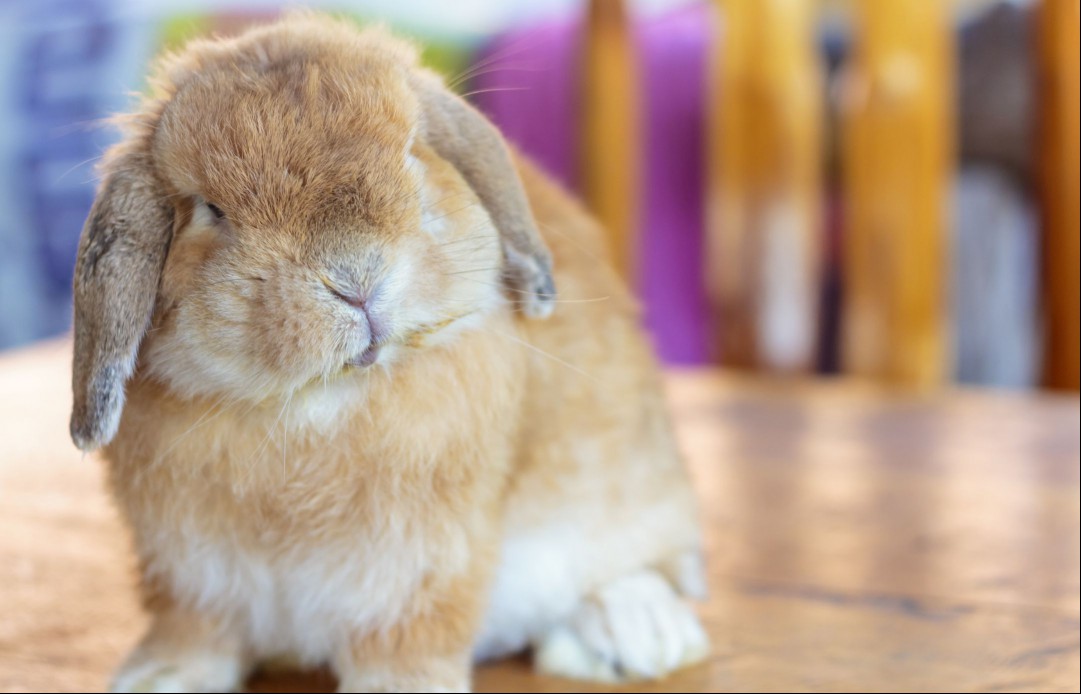
Credit: piyaphat50 / Getty Images
The diminutive Holland Lop is a dwarf rabbit breed with lop ears. It has a large head relative to its body, and small dropped ears. The Holland Lop is in the top five most popular breeds recognized by the American Rabbit Breeders Association. It is docile and easier to handle than some of the larger lop breeds of rabbits.
- Less than 4 pounds
- Agouti, broken, pointed white, self, shaded, ticked, or wide-band color groups
- Muscular build, lop ears
28 of 43Jersey Woolly
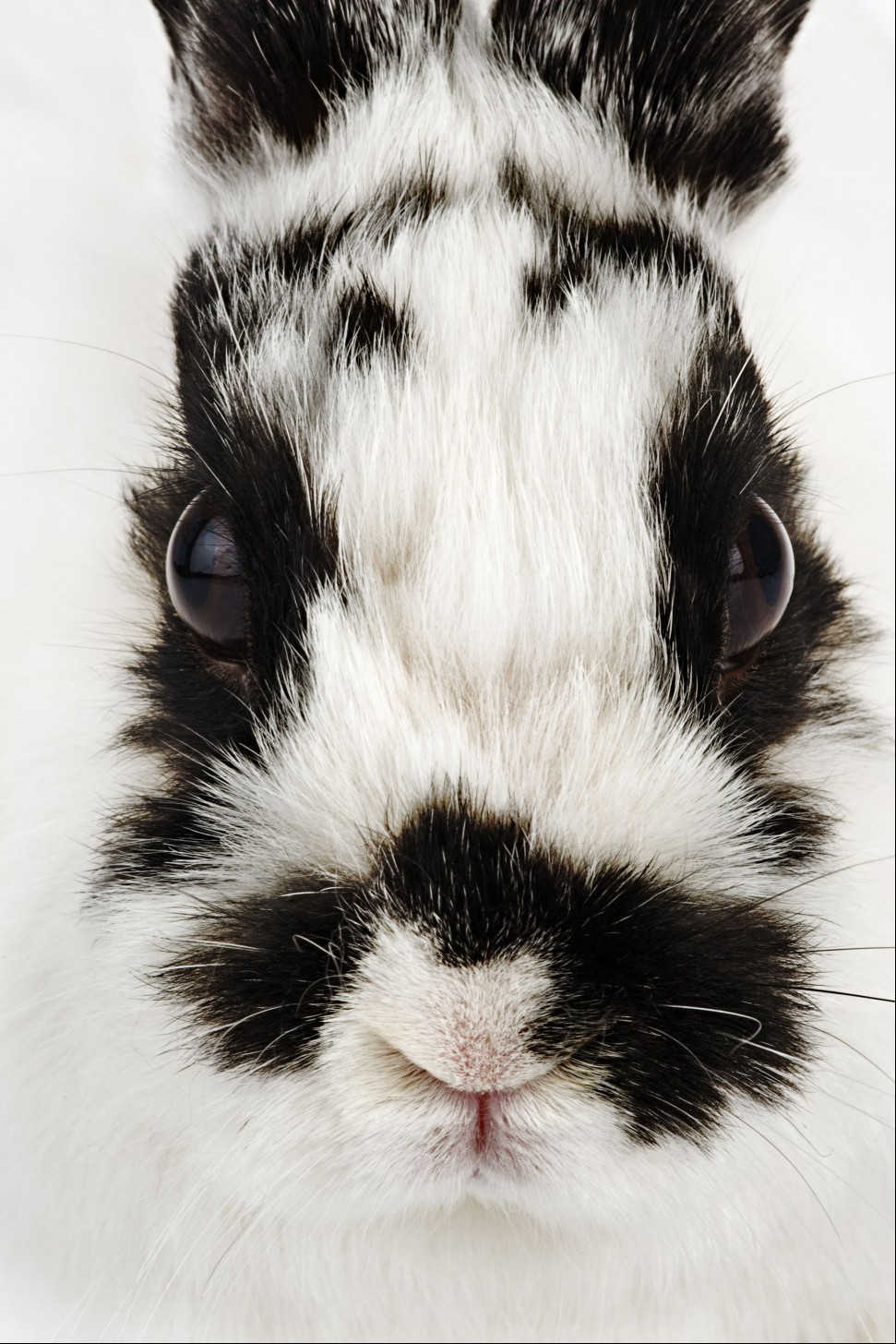
Credit: Martin Harvey / Getty Images
The Jersey Woolly is a relatively new breed of rabbit that was recognized by the American Rabbit Breeders Association in 1988. This dwarf breed has a woolen coat that is easier to care for than some other wool-coated rabbit breeds. The friendly Jersey Woolly is one of the most popular breeds on the rabbit show circuit.
- Less than 3.5 pounds
- Wide variety of colors, long wooly coat
Continue to 29 of 43 below29 of 43Lilac
The Lilac rabbit is a standout among rabbits thanks to its trademark pinkish dove-gray-colored soft fur. The breed was created in two places simultaneously in the early 20th century—in England and the Netherlands. Lilac-colored rabbits from both countries were imported to the United States in the 1920s. Today, the Lilac rabbit is a very rare, but treasured breed.
- 5.5 to 8 pounds
- Lilac coloration
- Compact body and dense coat
30 of 43Mini Lop
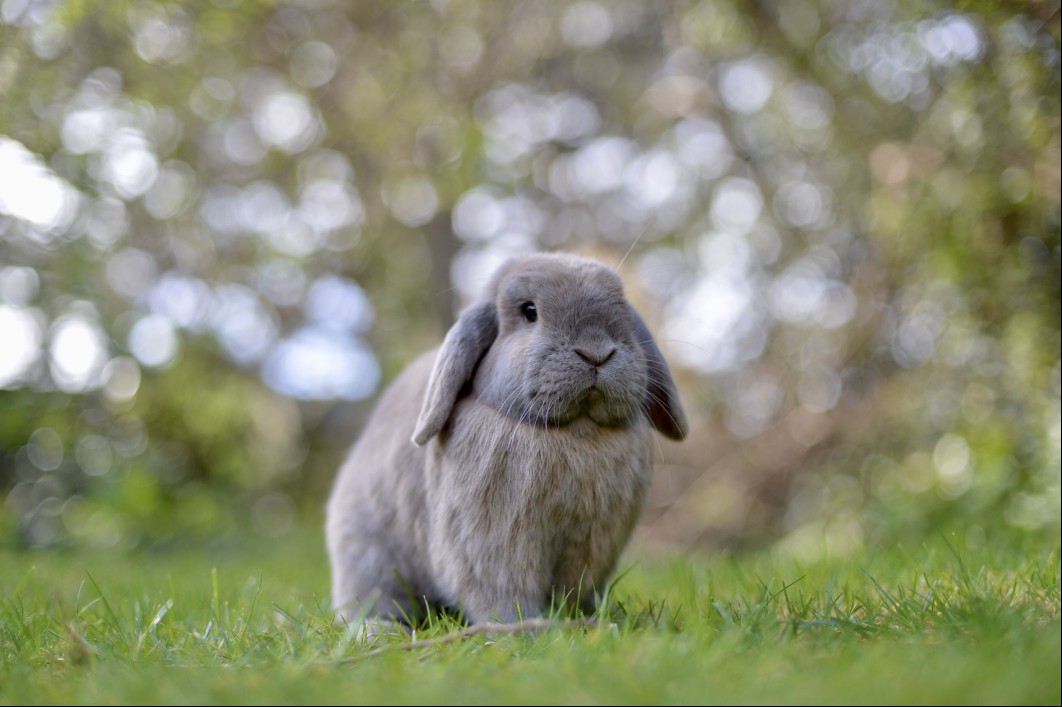
Credit: robert reader / Getty Images
The Mini Lop is a small, lopped-eared rabbit breed. Its body is compact and stocky, and its head is the size of a softball. At 4.5 to 6.5 pounds, Mini Lop is larger than the Holland Lop but smaller than both the English Lop and French Lop.
- 4.5 to 6.5 pounds
- Agouti, broken, pointed white, self, shaded, ticked, or wide-band color groups
- Muscular and compact
31 of 43Mini Rex
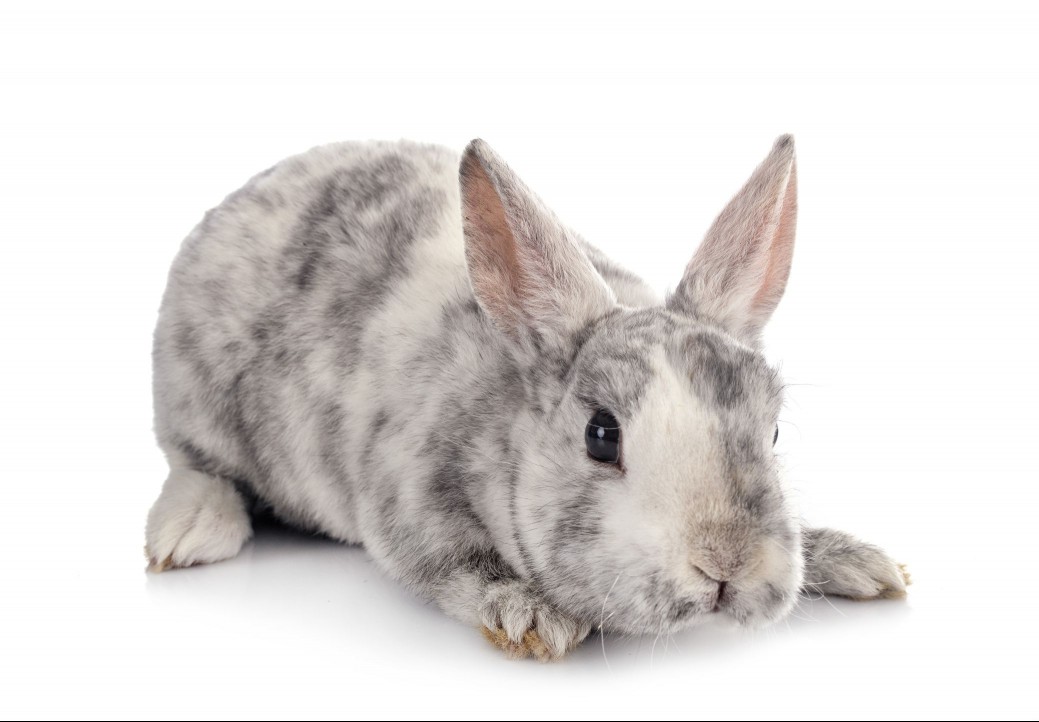
Credit: cynoclub / Getty Images
A relatively new breed of rabbit recognized by the American Rabbit Breeders Association in 1988, the Mini Rex is a smaller version of the Rex rabbit, which is famous for its velvety, plush, soft fur. Rex rabbits have a maximum weight of 10.5 pounds, but Mini Rex rabbits are 4.5 pounds maximum. It has a compact, rounded body and is sweet, friendly, and calm.
- 3 to 4.5 pounds
- Black, blue, broken group, castor, chinchilla, chocolate, lilac, lynx, opal, red, seal tortoise, white
- Compact, rounded body
32 of 43Netherland Dwarf
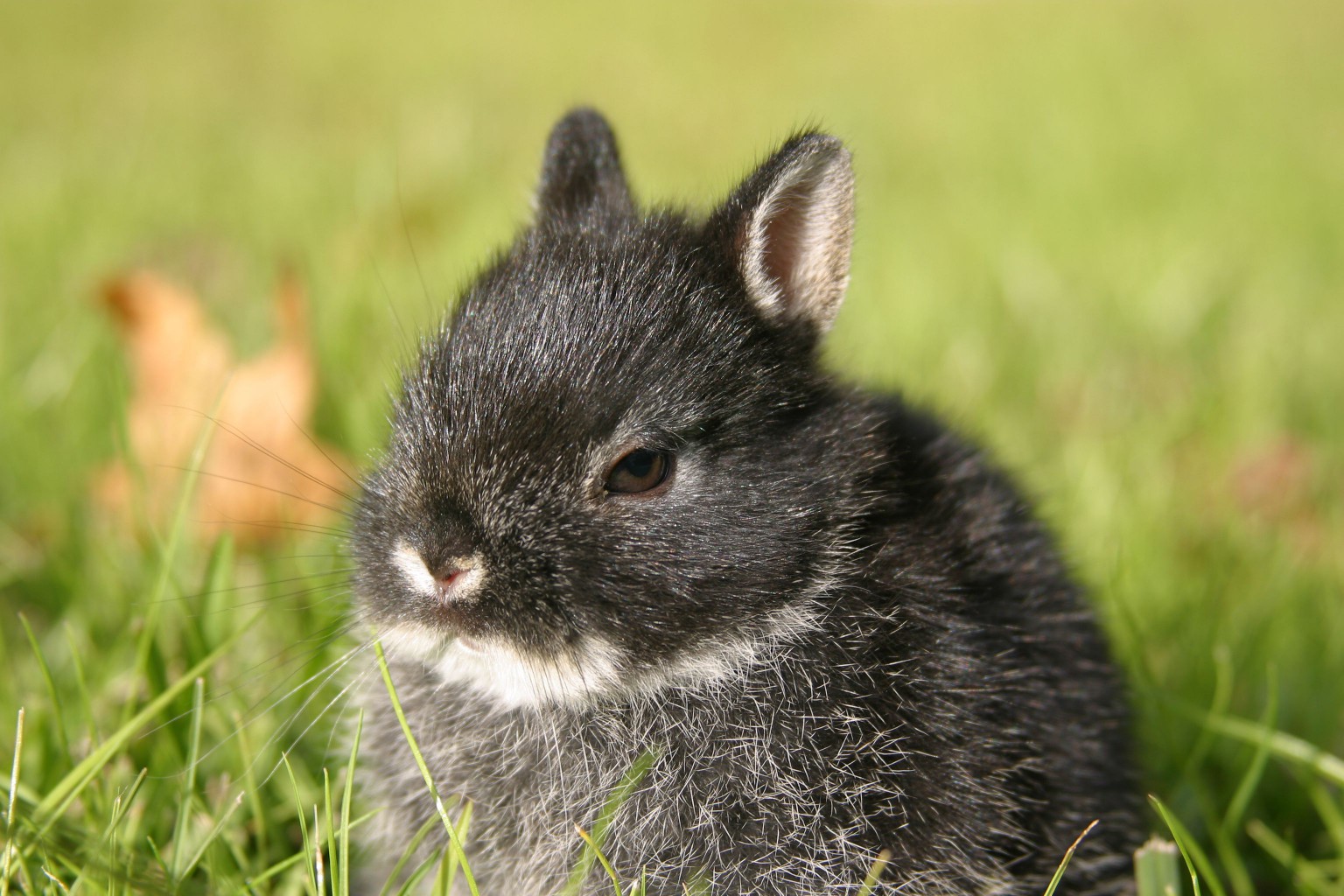
Credit: sixty7a / Getty Images
Weighing less than 2.5 pounds, the Netherland Dwarf is one of the smallest breeds of rabbit. The Netherland Dwarf comes in 25 different colors, including black, blue, chinchilla, chestnut, chocolate, fawn, Himalayan, lilac, orange, steel, tortoiseshell, blue-eyed white, and ruby-eyed white. Some can be timid, so gentle handling is recommended.
- Less than 2.5 pounds
- Self-group, shaded group, agouti group, tan pattern group, fawn, Himalayan, orange, steel, tortoiseshell
- Ears seem too short for head
Continue to 33 of 43 below33 of 43New Zealand
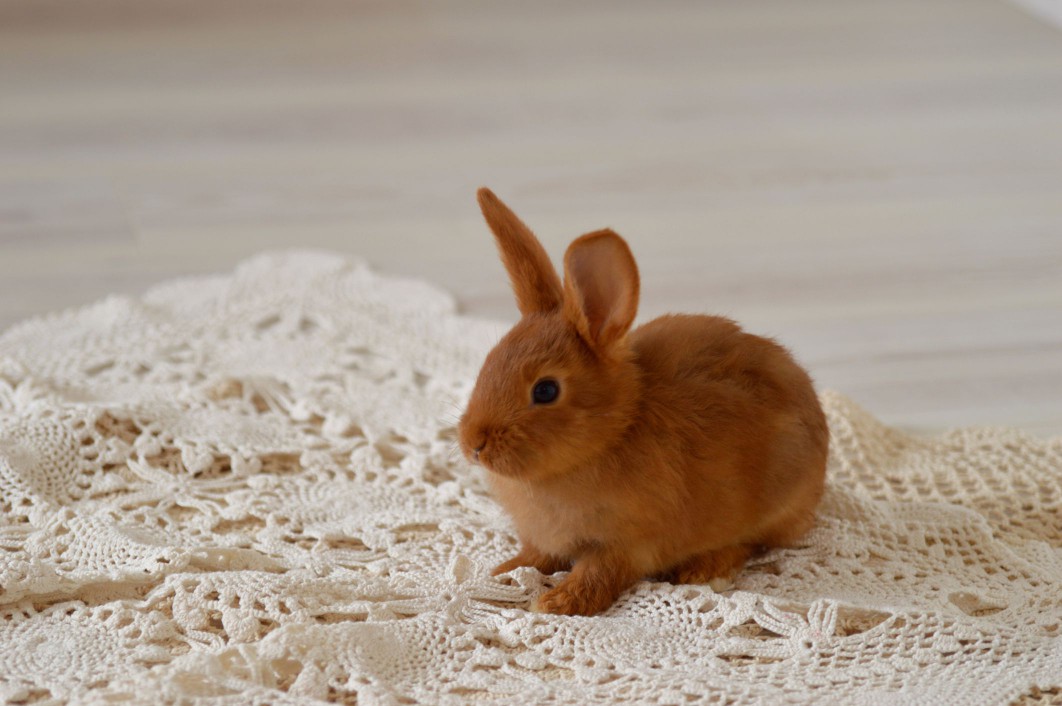
Credit: Srkzin Szucs Linda / EyeEm
Don’t be fooled by the New Zealand rabbit’s name—this breed was born and bred in the United States. The New Zealand was recognized by the American Rabbit Breeders Association in 1916. The medium to large breed comes in five color varieties: white, red, black, blue, and broken (any color mixed with white). New Zealand rabbits are affectionate and docile pets.
- 9 to 12 pounds
- Black, red, white
- Long, muscular body
34 of 43Palomino
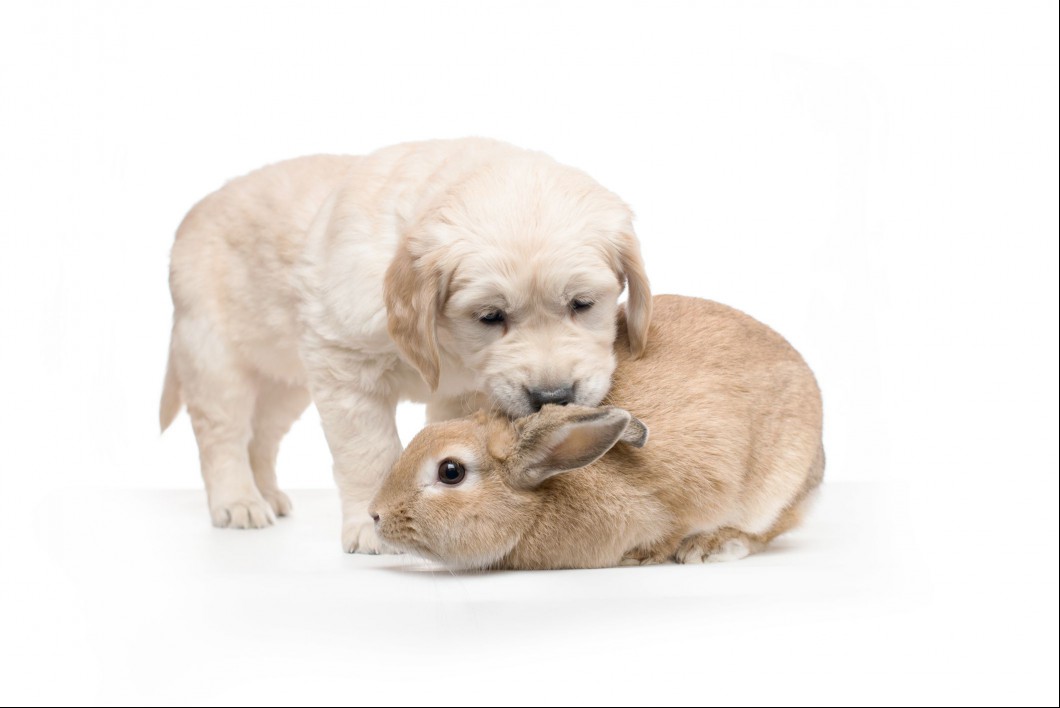
Credit: MarkoNOVKOV / Getty Images
The Palomino rabbit is named for its golden coat, which is reminiscent of that of the famous Palomino horse. The Palomino rabbit is an American creation, developed in Washington state in the 1940s and 1950s. The breed was first called “Tawnies,” then “Washingtonian” but the breed name was changed to Palomino and officially recognized by the American Rabbit Breeders Association in 1957. Palomino rabbits are sweet and friendly pets.
- Less than 9.5 pounds
- Golden, lynx
- Large, upright ears
35 of 43Polish

Credit: magdasmith / Getty Images
Despite its name, the Polish rabbit is believed to have originated in Great Britain, although no one knows for sure. It is a very old breed, being mentioned in texts from 1860. Weighing less than 3.5 pounds, the Polish is a very small rabbit, but it’s not a dwarf breed. The Polish rabbit is a calm and friendly pet.
- Less than 3.5 pounds
- Black, blue, chocolate, blue-eyed white, ruby-eyed white
- Very short ears
36 of 43Rex

Credit: Silentfoto / Getty Images Known as the “King of the Rabbits,” the Rex rabbit is prized for its velvety, plush, soft fur, which is short and dense, lending it a unique feel. The luxurious coat comes in 16 color varieties. The Rex rabbit originated in France in the early 20th century. Rex rabbits are playful and affectionate.
- 7.5 to 10.5 lbs
- Black, black otter, blue, broken group, Californian, castor, chinchilla, chocolate, lilac, lynx, opal, red, sable, seal, white
Continue to 37 of 43 below